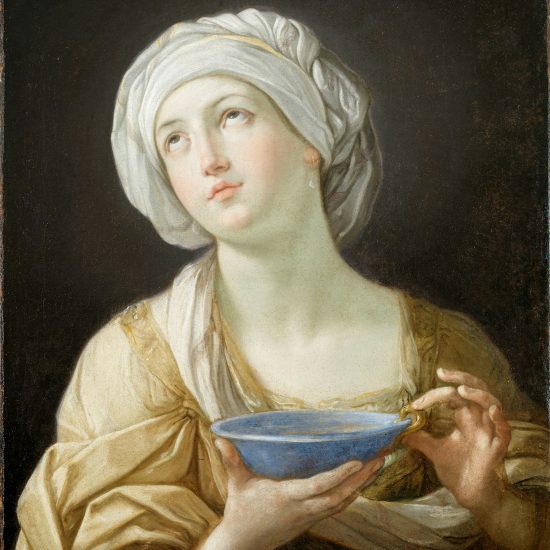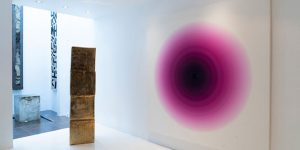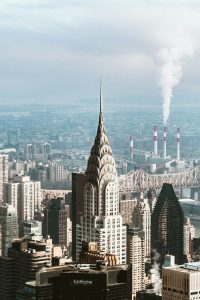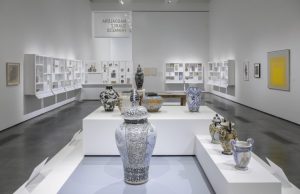Baroque art, a movement that flourished in Europe from the late 16th century to the early 18th century, is renowned for its dramatic use of light and shadow, emotional intensity, and dynamic compositions. This article delves into the key characteristics, major artists, and significant works that define this opulent style, reflecting the grandiosity of its time.
The Origins of Baroque Art
Historical Context of Baroque Art
Baroque art, a period marked by grandeur, drama, and movement, emerged in the late 16th century and continued to flourish until the early 18th century. Understanding the historical context in which it developed is essential to appreciating its characteristics and significance. This context is shaped by political, religious, and cultural factors that influenced the creation and evolution of Baroque art.
The Counter-Reformation
Religious Turmoil
The Counter-Reformation was a major force behind the development of Baroque art. This period of intense religious conflict followed the Protestant Reformation, which began in 1517 when Martin Luther published his Ninety-Five Theses, challenging the Catholic Church’s practices. The Reformation led to the fragmentation of the Church and the rise of Protestantism across Europe.
The Catholic Church’s Response
In response to the growing Protestant movement, the Catholic Church initiated the Counter-Reformation, a campaign to reform and reaffirm its doctrines and practices. The Council of Trent (1545-1563) played a crucial role in this process, addressing issues such as church corruption and clarifying Catholic theology. The Council also recognized the power of art as a tool for religious education and inspiration, leading to the endorsement of art that was emotionally engaging and visually impressive.

Source: https://unsplash.com/photos/hindu-deity-painting-on-brown-wooden-table-F-_lq-y7UAo
Artistic Patronage
The Catholic Church became a significant patron of Baroque art, commissioning works that aimed to convey religious themes with clarity and emotional impact. Artists were encouraged to create dramatic, realistic images that could evoke strong responses from viewers and reinforce Catholic teachings. This directive gave rise to the powerful, expressive style that characterizes Baroque art.
Political and Social Changes in the Era of Baroque Art
The Rise of Absolute Monarchies
The 17th century saw the rise of absolute monarchies across Europe, where kings and queens wielded immense power and sought to display their authority and magnificence through art and architecture. Rulers like Louis XIV of France, Philip IV of Spain, and various Italian princes and popes commissioned grandiose works to demonstrate their wealth and power.
Artistic Centers
Italy remained the heartland of Baroque art, particularly Rome, where the papacy played a dominant role as an art patron. However, other European regions developed their own distinctive Baroque styles. France, under the reign of Louis XIV, saw the construction of the Palace of Versailles, an epitome of Baroque architecture and art. In Spain, the Habsburg monarchs supported artists like Diego Velázquez, whose works embodied the grandeur of the Spanish Baroque.
Socio-Economic Factors
The 17th century was also a period of significant socio-economic changes. The expansion of trade and colonization brought wealth to Europe, fostering a new class of affluent patrons who commissioned art for private collections and public display. This economic prosperity allowed for greater investment in large-scale artistic projects, further fueling the development of Baroque art.
Scientific Developments in the Era of Baroque Art
The Scientific Revolution
The Baroque period coincided with the Scientific Revolution, a time of groundbreaking discoveries and advancements in fields like astronomy, physics, and anatomy. Figures such as Galileo Galilei, Johannes Kepler, and Isaac Newton challenged traditional views of the universe and nature. This new understanding of the natural world influenced Baroque artists, who sought to depict the physical world with greater accuracy and dynamism.
Humanism and Individualism
Renaissance humanism, which emphasized the value of the individual and the study of classical antiquity, continued to influence Baroque artists. This focus on human experience and emotion is evident in the expressive, often dramatic, portrayal of figures in Baroque art. Artists aimed to capture not just the physical appearance but also the inner life and emotional states of their subjects.
Cultural Exchange and Influence
Global Exploration
The age of exploration and colonization brought Europe into contact with diverse cultures and artistic traditions from the Americas, Asia, and Africa. These encounters influenced European art, introducing new motifs, techniques, and materials. The exchange of ideas and goods enriched Baroque art, adding layers of complexity and exoticism to its themes and styles.
The Spread of Baroque Art
It spread rapidly across Europe, with each region adapting the style to its own cultural context. In the Catholic countries of Southern Europe, it remained closely tied to religious themes and Church patronage. In Protestant regions like the Dutch Republic, Baroque art took on a different character, focusing more on secular subjects such as landscapes, still lifes, and genre scenes, while retaining the dramatic intensity and detail characteristic of the style.
Key Influences of Baroque Art
The Renaissance, with its emphasis on classical antiquity, served as a foundation upon which Baroque artists built their more theatrical and elaborate styles. The works of Michelangelo, Caravaggio, and Bernini exemplified the transition from Renaissance clarity to Baroque dynamism.
Geographic Spread
Baroque art quickly spread across Europe, each region adapting the style to its unique cultural context. Italy remained the epicenter, but significant contributions also came from France, Spain, the Netherlands, and Flanders. Each of these regions developed distinct variations of Baroque art, reflecting local tastes and traditions.
Distinctive Features of Baroque Art
Dramatic Lighting
One of the most recognizable characteristics of Baroque art is its use of chiaroscuro, a technique that contrasts light and dark to create a sense of volume and depth. Artists like Caravaggio mastered this technique, creating intense emotional scenes where light seemed to emanate from within the painting itself.
Movement and Energy
Baroque compositions are known for their dynamic movement and energy. Figures are often depicted in mid-action, with swirling drapery and dramatic gestures that break through the constraints of the canvas. This sense of movement conveys a feeling of immediacy and involvement, drawing the viewer into the scene.

Source: https://unsplash.com/photos/brown-and-white-sail-ship-on-sea-painting-TjegK_z-0j8
Emotional Intensity
Baroque art aims to evoke strong emotional responses from its viewers. Whether through the intense expressions of its subjects or the dramatic, often tumultuous scenes depicted, Baroque works are designed to move and inspire. This emotional intensity is particularly evident in religious works, which often depict moments of divine revelation or martyrdom with profound poignancy.
Major Pioneers of Baroque Art
Caravaggio: The Master of Light and Shadow
Michelangelo Merisi da Caravaggio (1571-1610) revolutionized Baroque art with his dramatic use of light and shadow. His works, such as “The Calling of Saint Matthew” and “Judith Beheading Holofernes,” are characterized by their intense realism and emotional depth. Caravaggio’s innovative techniques influenced countless artists across Europe
Gian Lorenzo Bernini: Sculpting the Divine
Gian Lorenzo Bernini (1598-1680) was a master sculptor and architect. His sculptures, like “Ecstasy of Saint Teresa” and “Apollo and Daphne,” are celebrated for their intricate detail, dynamic movement, and powerful emotional impact. Bernini’s work epitomizes the grandeur and spiritual fervor of the Baroque period.
Peter Paul Rubens: The Flemish Virtuoso
Peter Paul Rubens (1577-1640) was a prolific painter whose works are marked by their vibrant color, dynamic compositions, and exuberant sensuality. His paintings, such as “The Elevation of the Cross” and “The Massacre of the Innocents,” combine classical themes with Baroque drama, making him one of the most influential artists of his time.
Iconic Works of Baroque Art
“The Ecstasy of Saint Teresa” by Gian Lorenzo Bernini
This sculpture, located in the Cornaro Chapel of Santa Maria della Vittoria in Rome, is a quintessential example of Baroque art. It depicts Saint Teresa of Ávila in a moment of divine ecstasy, pierced by an angel’s arrow. The work’s dramatic composition, lifelike details, and emotional intensity make it a masterpiece of Baroque sculpture.
“The Night Watch” by Rembrandt van Rijn
Rembrandt’s “The Night Watch” is one of the most famous Baroque paintings. This large-scale group portrait, housed in the Rijksmuseum in Amsterdam, showcases Rembrandt’s mastery of light and shadow, as well as his ability to capture the individuality and dynamism of his subjects. The painting’s sense of movement and dramatic use of light have made it an enduring symbol of the Baroque period.
“Las Meninas” by Diego Velázquez
“Las Meninas,” painted by Diego Velázquez in 1656, is a complex and enigmatic work that has fascinated viewers for centuries. The painting portrays the Spanish royal family, with Velázquez himself included in the composition. Its intricate play of perspectives, mirror reflections, and the interplay between light and shadow exemplify the sophistication and depth of Baroque art.
The Legacy of Baroque Art
Influence on Subsequent Art Movements
Baroque art’s influence extended well beyond its own era, impacting a range of subsequent artistic movements. The emotional intensity and dramatic techniques developed by Baroque artists can be seen in the works of later movements such as Rococo, Romanticism, and even Modernism. Artists continued to draw inspiration from the Baroque period’s bold use of light, color, and composition.
Preservation and Appreciation
Today, Baroque art is celebrated in museums and galleries around the world. Major institutions like the Louvre, the Prado, and the Vatican Museums house extensive collections of Baroque works, allowing contemporary audiences to appreciate the skill and creativity of the artists. These works remain a testament to the enduring power and beauty of Baroque.
Continued Scholarly Interest
Baroque art continues to be a subject of scholarly interest and research. Art historians and scholars explore its various facets, from its theological and philosophical underpinnings to its technical innovations and cultural impact. The ongoing study of Baroque art enriches our understanding of this pivotal period in art history and its lasting legacy.
Conclusion
Baroque art, with its grandeur, drama, and emotional depth, remains one of the most captivating and influential periods in art history. Its distinctive features, from dramatic lighting to dynamic compositions, continue to inspire and move viewers. The works of master artists like Caravaggio, Bernini, and Rubens stand as enduring testaments to the brilliance of Baroque art, reflecting a time of profound artistic achievement and cultural transformation.
References
- Harris, A. S., & Zucker, S. (2023). “Baroque art in Europe, an introduction.” Smarthistory. Retrieved from Smarthistory.
- “Baroque art and architecture.” (2022). Encyclopaedia Britannica. Retrieved from Encyclopaedia Britannica.
- Bailey, G. A. (2013). “The Spirituality of Baroque Art.” Oxford University Press.




